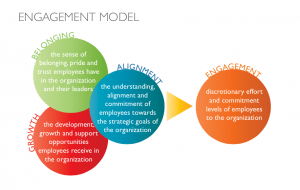Recruitment is an inherently challenging process that requires attention to detail, a methodic approach, and consistency. Yet, the COVID-19 crisis has made hiring even harder as recruiters have to navigate the Great Resignation and lack of high-quality candidates.
According to the Manpower Group Survey (2021), seven in ten companies have reported talent shortages that slow down their recruitment efforts. Moreover, the situation has never been this dire in the last 15 years.
The global shift to remote work and job seekers’ higher expectations leave no place for mistakes, making it essential to leverage technology and track every step. Every action could make a difference.
It’s why recruiters should monitor the recruitment process from the day a candidate submits their job application until the onboarding stage is complete. It allows them to keep hiring under control, notice potential issues timely, and react before they fester and imperil candidate experience.
As an HR professional, you’re responsible for implementing strategies that ensure seamless recruitment and hiring funnel flow. Otherwise, you could lose top talents or waste valuable resources.
To avoid that, you must make the most of HR tools that allow you to audit and analyze your hiring efforts.
Why it’s Crucial to Track the Recruitment Process
Throughout the hiring process, you’ll encounter various challenges that could be severe enough to result in spending months trying to select the most compatible talent. Moreover, you could lose time, energy, and money.
For instance, 75 percent of recruiters cite candidates changing their minds as one of their top hiring difficulties. That often happens when recruitment turns out to be longer than you expected, forcing job candidates to choose a company that took less time to hire them.
On the other hand, 41 percent say they struggle to fill entry-level positions and find quality talents in a short period. It’s no wonder, 42 percent of companies plan to invest in tools to speed up hiring.
Time is often essential in recruitment. No one likes to wait several months to hear whether they’ll get the job or not. It can also make candidates perceive an organization as unprofessional and incompetent.
But if you don’t track the recruitment process, you might not even notice you took more time than you initially planned to identify and onboard the best match. Although 75 percent of HR leaders say that hiring analytics are significant for business success, more than half don’t use them.
Moreover, less than 25 percent of those who use analytics later analyze them. Yet, that means that many companies fail to leverage the technology they have at their disposal and improve their hiring strategies.
Tracking relevant recruitment KPIs allows you to identify setbacks before they happen and tweak initiatives that slow down the process. Moreover, you can tailor them to your organizational goals and track the most relevant.
That way, you can discover how much time you need to move job applicants through the funnel, where your most successful talents come from, or assess candidate satisfaction rates. Metrics allow you to add value to your hiring strategies and identify critical elements.
Although you can choose what metrics are the most relevant for your hiring needs, there’s one that you should always track, regardless of your recruitment objectives.
Time-to-Hire: 4 Things You Should Know
Time-to-hire is a must-track metric in every hiring process. It measures how many days passed between the moment a job applicant submitted their application and the moment they accepted your job proposal.
Here are the four crucial things you should know about this metric to use it efficiently.
1. What Makes Time-to-Hire Different from Time-to-Fill?
Even the most experienced HR professionals tend to blur the line between these two metrics. Yet, these two have substantial differences.
Time-to-hire is a metric that tracks the number of days between a job applicant applying for an open position and accepting a company’s offer to work with them.
On the other hand, time-to-fill measures the time between the job requisition approval and recruitment of the most compatible talent.
Hence, time-to-fill tracks an extended period, starting with the day responsible decision-makers approve the form requesting a new hire. Time-to-hire is more specific and measures the time from the moment a job applicant entered the hiring funnel.
As a result, the latter depends on various factors that affect how fast recruiters will hire the candidate. At some point, many qualified talents will apply for the available position, and the speed at which the most compatible individual is recruited is crucial.
2. What Essential Information Time-to-Hire Provides?
It is one of the metrics you should never leave out if you want to reduce the time you need to employ a high-quality candidate. Time-to-hire gives you insights into two essential elements of the recruiting process.
By tracking this metric, you’ll discover how efficient your hiring strategies are. Since it measures the speed of your processes once a candidate enters the funnel, you’ll get information about how long it takes to assess job applications, complete interviews, and have the ideal talent accept your job offer.
If it turns out the time you need to recruit a candidate lasts longer than regular, that points to a slow process that lacks efficiency. Thus, it indicates redundant bottlenecks you should address to ensure the recruitment flows faster in the future.
However, time-to-hire also reveals valuable data about the candidate experience. Put yourself in the candidates’ shoes.
Would you prefer to go through different hiring stages and receive the job offer in two weeks or two months? – No one enjoys waiting for the news about the selection process for months.
By speeding up the recruitment, you’ll make the wait less stressful and improve the candidate experience.
3. The Average Time-to-Hire
Most studies and surveys focus on time-to-fill when it comes to the average rate. Thus, the median time-to-hire depends on the industry.
However, according to LinkedIn, the average length is 41 days. Their reports show that finding the right candidate for technical positions requires more time.
Because of that, those applying for jobs in engineering, research, and project management, have to wait longer. The timeline is shorter in industries such as administration, customer service, and accounting.
Time-to-hire also depends on a company’s size. For instance, those with 5,000 or more workers typically take 58 days to employ the right candidate.
It isn’t rare for the recruitment process to undergo delays that could extend it to 90 days. That often happens due to a large influx of job applications, an extensive talent pipeline, and candidates taking some personal time before starting a new job.
These factors can slow down the hiring process, but the time-to-hire metric allows you to identify the specific reason and enhance your practices.
4. How to Calculate Time-to-Hire?
Even though you probably understand the time-to-hire metric and what timeline it covers, it might be confusing how to put it into practice and start tracking the days. Day one begins with the date a candidate submitted their job application.
From that point, the clock starts ticking, covering the period your team needs to assess their documentation, conduct the interview, and send them an official job offer. The time is up once the job applicant accepts the proposal and becomes your employee.
Hence, if they applied on day 15 and signed the contract on day 31, time-to-hire is 16. It’s important to note that you can calculate this metric for each job role or measure the median time-to-hire.
Moreover, you can opt for a manual approach, Excel, spreadsheet, or applicant tracking software. If you want to get the most accurate data and improve efficiently, choose a system with recruitment tools that will take care of time-to-hire calculations for you.
The Role of Recruitment Tools in Measuring Time-to-Hire
HR Technology was already a significant element for recruitment before the pandemic. Thanks to its top-notch functions and ability to accelerate processes, this market was experiencing an increasing boom.
But the COVID-19 crisis gave HR tech an additional push, making it a must-have for successful businesses. It’s no wonder that forecasts show the human resources technology market will grow from 24.04 billion USD in 2021 to 35.66 billion USD in 2038.
Digital transformation is taking over this industry, allowing it to leverage the advantages of AI tech and speed up its practices. As a result, in their aim to upgrade their hiring processes, companies will increase their investments in HR tech, such as an Applicant Tracking System that comes with an array of recruitment tools.
These advanced gadgets help HR departments reduce the number of manual tasks, accelerate their procedures, and create a better candidate and employee experience. That makes them ideal for tracking hiring metrics and avoiding unnecessary activities that drag out the recruitment process.
What are Recruitment Tools?
Recruitment tools are a part of HR technology, allowing recruiters to automate those aspects of recruitment that don’t require human supervision. Thanks to that, HR departments can minimize the number of manual assignments, increase efficiency, and implement a data-driven approach.
Moreover, the overall productivity increases, making it easier to reach company objectives, identify the most compatible talents and hire top candidates faster. Recruiters no longer have to perform an overwhelming number of manual tasks because these tools function on a principle of predictive analytics, machine learning, and AI.
As a result, you can simplify the recruitment process in its entirety and provide better experiences for all your customers, clients, candidates, and employees.
How Do Recruitment Tools Facilitate Time-to-Hire Measuring?
Companies that use recruitment tools can rely on software for automatically tracking and calculating hiring metrics, including time-to-hire. Although you can choose to do it manually or use an Excel template, it will save you a lot of time if you opt for an applicant tracking software (ATS).
Besides speeding up the process, you can also establish a talent pipeline using applicant tracking software before posting the job ad. That way, you will spend less time identifying the best fit among many candidates.
Instead, you’ll have potential compatible job applicants before the job requisition approval, making assessments and interviews easier. Thus, if you encounter a promising talent who isn’t the best match for the available vacancies, you can store their data in your ATS and reach out to them in the future.
Other than that, you can leverage its recruitment tools to monitor when you posted a specific job role and when candidates applied. Thanks to that, you’ll always have easy access to recruitment data and track how fast each candidate moves through the hiring funnel.
However, you may still not have a clear idea of how you could leverage the recruitments tools within an ATS to reduce your time-to-hire and improve your practices.
Here are the top five tips on how to accelerate the hiring process using an applicant tracking software.
5 Tips on How to Use Recruitment Tools to Reduce Time-to-Hire
1. Identify an ATS that Aligns With Your Objectives
Before purchasing HR tech, consider the needs it should answer. Think about your business objectives, company culture, and bottlenecks.
Although you might find it tempting to opt for any low-cost solution, you should research before making the final decision. – Seek a comprehensive Applicant Tracking System that is data-driven and has all-encompassing recruitment tools.
Ensure that it offers various options and not only data storage or resume parsing. By choosing a multifunctional system, you’ll automate different segments of your recruitment process and receive accurate data.
Instead of purchasing a system that can perform one action, choose the one that can solve various issues and improve your practices across different levels. Other than tracking recruitment metrics, you’ll get a comprehensive system that helps you build a talent pipeline, run analytics, find the most compatible candidate, and manage candidates.
It’s essential to ease your time-to-hire tracking before you even start measuring. It’s why you should read about what recruitment tools an ATS contains and whether it has a holistic approach to hiring.
Thus, the system you choose will become the backbone of your recruitment efforts. Because of that, it should cover every step of the process and automate multiple manual tasks.
2. Use an ATS to Keep Candidates Engaged
An efficient Applicant Tracking Software helps you develop a talent pipeline even before looking for a new hire. However, that’s not enough if you can’t maintain regular communication and keep your talents interested.
It’s why you should leverage an ATS to keep candidates engaged, send them feedback, messages, and updates throughout the recruitment process. As a result, job applicants will perceive you as a professional company that respects its human capital and keeps them in the loop.
Moreover, they’ll be more inclined to accept your job offer and not change their minds in the last stages of the process. It’s essential to interact with the candidates until the selection process finishes.
It’s how you’ll continue establishing a stable talent pipeline and continuously have easily accessible high-quality job applicants. Then, once you start looking for new employees, you’ll spend less time on candidate sourcing. – You will already have at your disposal those that passed the screening phase and align with the company culture.
3. Leverage Recruitment Analytics
To reduce your time-to-hire, you should know what recruitment procedures require your attention and enhancements. If you choose to track this metric manually, you likely won’t get accurate data nor address the burning issues.
With the right system, you’ll have access to the most detailed hiring information and KPIs. For instance, a top-notch ATS can identify if you spend too much time assessing candidate applications or deciding about candidate selection.
That way, you’ll get insights into the bottlenecks you should solve to move recruitment forward. Moreover, a coherent system will keep you updated about how many job applicants are in the talent pipeline for the same vacancy, how many were hired, and who recruited them.
You can also leverage ATS analytics to analyze your candidate sourcing channels and discover where you found your top performers. By identifying where high-quality candidates come from, you’ll be able to target your efforts and reduce the time to reach compatible talents.
Ultimately, recruitment tools allow you to optimize your hiring strategy, tweak the initiatives, and focus on funnel stages that currently hinder the process.
4. Keep Everything in One Place
When in a rush and trying to reduce the time you need to select the right fit for a job opening, it’s critical to have all the necessary information. If you track recruitment KPIs manually, the data will likely be scattered across various folders, papers, and files.
To avoid that, consider an all-encompassing ATS that contains reports, data, and candidate profiles in one place. Look for a system with an easy-to-navigate dashboard because it minimizes the time you spend searching for information.
That way, you’ll be able to quickly move from one activity to another and accelerate candidate selection and onboarding.
5. Track Performance of Your Recruiting Team
If your recruitment continuously lacks efficiency and hiring the best match takes an unnecessarily long time, you might have to re-evaluate the performance of your recruitment team. Perhaps one of your recruiters struggles with a particular funnel stage or doesn’t understand the process in its entirety.
However, the only way to know if this is the case is by tracking their results and comparing them with the average time-to-hire and candidate satisfaction. That way, you’ll get data-driven insights, allowing you to reach out to your recruitment team and identify a more efficient approach.
Conclusion
Finding the right HR technology that helps you identify recruitment bottlenecks, speed up processes, and provide stellar candidate experience can be a challenge. It’s why you should conduct thorough research before making the final purchasing decision.
If you want multifunctional results that drive efficiency, opt for an Applicant Tracking System with multiple recruitment tools that minimize the number of manual assignments. As a result, you’ll store all the candidate data in a safe place, track the hiring KPIs, and have access to reliable analytics.
The insights you receive will help you address the pressing issues in the recruitment funnel and understand what actions you need to take to reduce time-to-hire. The outcomes will benefit your business and increase candidate satisfaction, resulting in a stable talent pipeline.
But the key to selecting software that allows you to reach this success is to choose a credible company with experience in developing high-performing systems.
Upgrade your recruitment process today with an ATS that provides automation, AI recommendations, and simplified procedures.
In recruitment, time is essential. Hence, take your hiring efforts to another level and reduce time-to-hire now.
Business & Finance Articles on Business 2 Community
(43)
Report Post






